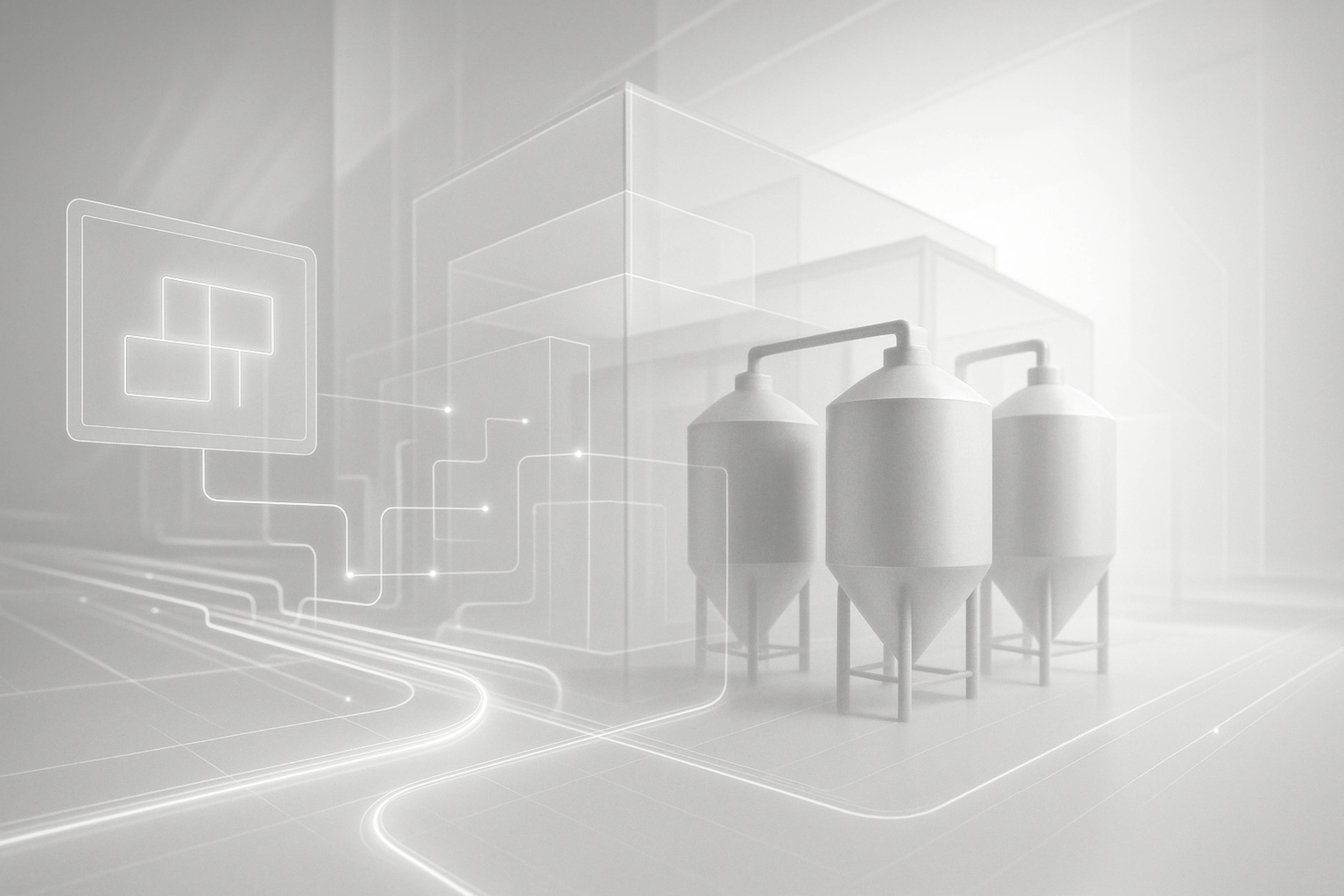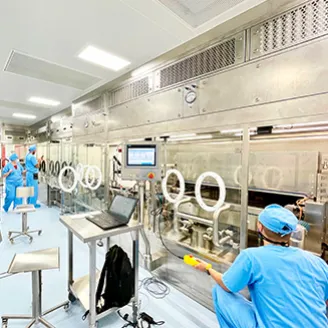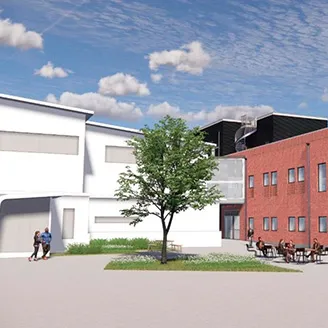Reference PROJECTS
Upgrading Legacy Process Control: Extending System Life and Data Integrity
Project details
Project details
Client
Global Top Producer of Pharmaceuticals
Location
Sweden
Market
Life Science
Solutions we provided
Upgraded PCS 7 to V10.0, added Process Historian 2024 for centralized data archiving, and migrated Simatic Batch — improving performance, data integrity, and compliance.
Executive Summary
Executive Summary
A leading manufacturer of protein‑based pharmaceutical products faced a problem: their existing process control system was running on an operating system that had reached end‑of‑life. Without regular security patches, the facility risked downtime, compliance issues, and data loss. Two production lines involved in producing pharmaceutical products derived from human proteins [NA1.1]needed to continue operating continuously while the automation system was modernized. KeyPlants Automation was engaged to deliver a comprehensive platform upgrade that would safeguard system performance, extend the life of the facility, and support long‑term archiving of process data.
We performed a detailed risk and system assessment to map all project‑specific adaptations and potential points of failure. By working closely with the client and technology partners, we developed an upgrade plan that preserved existing functionality while migrating the system to the latest Siemens PCS 7 platform. Before this project the production line did not have a dedicated historian; process data were saved directly on the operator station (OS) servers and an auxiliary file server. To address this gap we delivered and installed Siemens Process Historian 2024, the first central historian for this production system[NA2.1]. The project also included update and migration of the extensive Simatic Batch recipes and thorough factory and site acceptance testing. Despite a short order‑to‑commissioning timeline, the cooperative approach ensured a smooth transition. The upgraded platform now provides enhanced performance, improved data integrity, and enables continuous patching to meet current and future regulatory requirements.
Understanding The Context
Keeping process automation systems up to date is not just about new features, it is an important aspect of operational integrity and business continuity. In regulated industries like pharmaceuticals, outdated operating systems can quickly become a liability. Without vendor support, security vulnerabilities remain unpatched, and compliance becomes increasingly difficult. This upgrade project focused on reducing risk and maintaining uptime during changeover.
With two critical production lines and limited downtime windows, the stakes were high. The client needed:
Platform longevity: a migration path from PCS 7 V8.1 to the latest version PCS 7 V10.0 SP1 to ensure ongoing support and security updates.
Data integrity: implementation of a robust historian for long‑term archiving of process data, ensuring traceability and compliance. Prior to the upgrade the client did not have a historian; data was saved on local OS servers and an external file server.
Minimal disruption: an approach that preserved existing recipes and control logic while enabling a rapid switchover.
Before the upgrade, production data was stored locally on PCS7 OS and Batch servers with backups on a network file server. This fragmented storage approach made it difficult to track process history or perform holistic analysis. Installing a centralized historian was therefore central to the upgrade strategy and to meeting the client's data‑integrity goals.
The Challenge
At the start of the project, several risks had to be addressed:
- End‑of‑life operating system: The vendor would no longer supply updates, exposing the facility to cybersecurity and compliance risks. The upgrade had to close this vulnerability without interrupting production.
- Unknown customizations: Legacy systems often include project‑specific adaptations that are not covered by standard vendor testing.
- Compressed timeline: Production schedules allowed little downtime; the upgrade needed to be executed quickly and reliably.
To mitigate these uncertainties, we performed a pre‑upgrade assessment, examining system configurations, custom code, and installed software. This allowed us to define the scope of required testing and develop fallback strategies.
Our Solution
Early collaboration and planning
From day one, the project team—comprising KeyPlants Automation engineers, client process experts, and technology partners—prioritized open communication. Building on lessons from previous projects where collaboration was seen as a critical success factor, we jointly mapped the existing system and agreed on acceptance criteria. Workshops and regular progress reviews ensured alignment across all stakeholders.
Risk‑based upgrade strategy
The team developed an upgrade strategy that balanced safety and efficiency:
- System analysis and documentation: We captured the full configuration of PCS 7 and Simatic Batch, identifying any non‑standard adaptations. Documentation was updated to reflect the current state and the planned upgrade.
- Parallel environment build: A new PCS 7 V10.0 environment, complete with Process Historian 2024, was created in parallel. This allowed software testing and validation without interfering with live operations.
- Controlled cut‑over: Once validation was complete, the system was migrated in a controlled manner, minimizing downtime. Backup strategies ensured the ability to revert if unexpected issues arose.
Robust testing and validation
Factory Acceptance Tests (FAT) and Site Acceptance Tests (SAT) were structured around proven procedures from prior KeyPlants projects. Leveraging simulation tools where possible, we exercised all critical functions, ensuring compliance and performance. The cooperative testing environment gave both our team and the client confidence that the upgraded system would meet regulatory and operational requirements.
Results and Benefits
Despite the tight schedule, the upgraded platform was delivered on time and without major disruptions. The project yielded several tangible benefits:
- Enhanced performance
Operators noted that the upgraded control system feels “snappier,” with improved response times and a more intuitive interface.
- Improved data integrity
The new Process Historian 2024 provides robust long‑term archiving, ensuring data capture for compliance and process optimization and replacing the previous practice of saving data on local servers.
- Compliance & Business Continuity
By migrating to a supported operating system and platform, the client can now install security patches and updates as they are released, maintaining compliance, reducing cybersecurity risk and ensuring business continuity.
- Future‑proof architecture
The newer PCS 7 V10.0 platform lays a foundation for future enhancements, such as integration with higher‑level digital solutions or advanced analytics.
Given the complex environment our IT systems exist in today, security is on everyone’s mind. An up to date system platform is a requirement to install security updates from the vendor; therefore, computerized systems must be kept current, now more than ever.

Key Learnings and Future Outlook
Several insights emerged from this project:
- Communication and collaboration drive success: Cross‑functional cooperation between the client and our team was essential. As our previous case studies have shown, deep collaboration between subject matter experts and automation engineers is critical.
- Proactive system maintenance is non‑negotiable: In today’s cybersecurity landscape, leaving an automation system on an unsupported platform is a risk no facility can afford. Upgrading ensures the ability to apply security patches—a requirement underscored by evolving IT threats.
Moving forward, the client plans to build on this foundation. With a modern, compliant platform in place, they can explore advanced data analytics, digital twins, or further improvements. By prioritizing timely upgrades and data integrity, they have ensured that their facility remains secure, efficient, and ready for the future.




